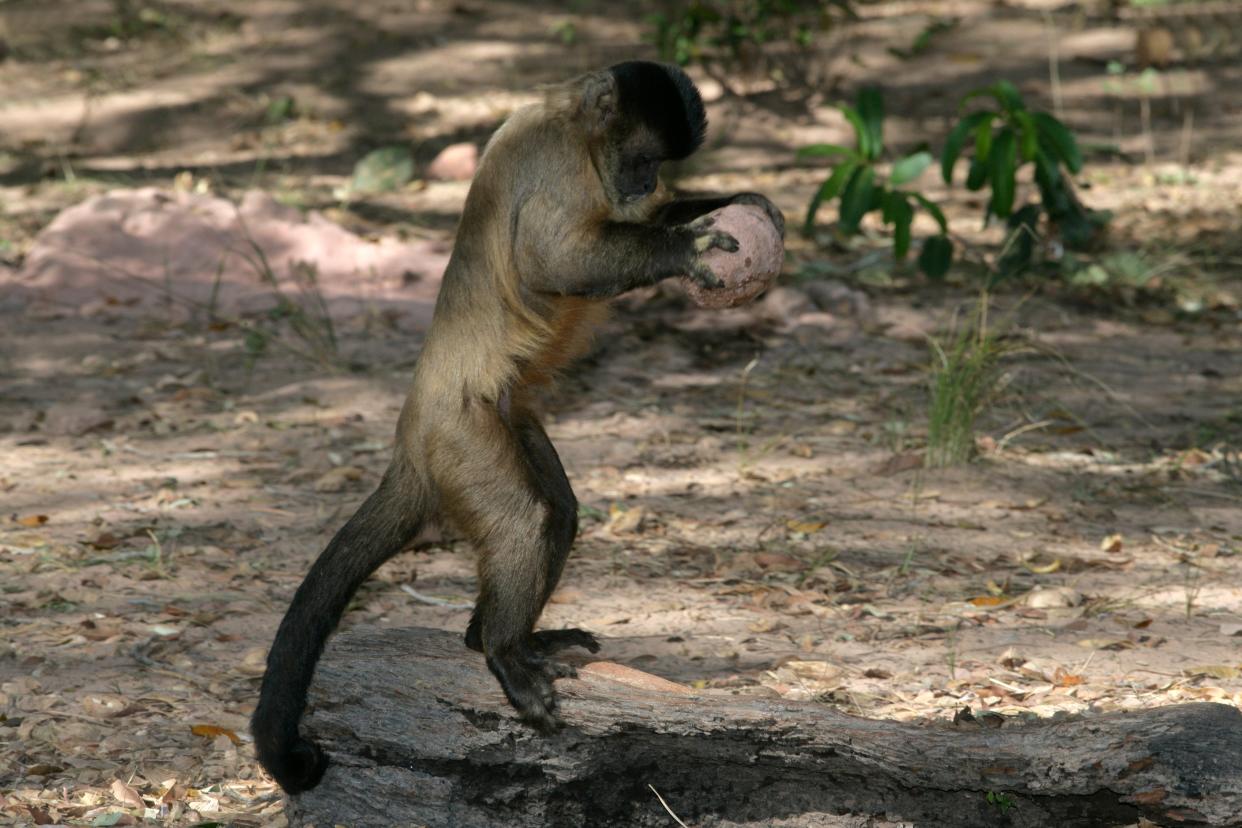Capuchin monkeys crush stones into powder to lick and smear on bodies to combat parasites, scientists believe

As spa treatments go, crushed rock licked and smeared over your body might not sound particularly appealing.
But this technique is used by bearded capuchin monkeys as a health treatment to prevent parasites, scientists believe.
A study of the primates published on Monday found those living in a remote national park in northeastern Brazil pulverised stones and mixed the powder with saliva before rubbing it over their bodies.
“We have a few theories to explain it, such as the use of quartz to combat parasites by eating the dust, or ectoparasites such as lice by rubbing themselves with it,” said Brazilian primatologist, Tiago Falótico. “We have yet to test these hypotheses.”
Researchers said the animals made use of rocks for a range of activities including digging, seed pounding, nut cracking, and stone-on-stone percussion.

The purpose of the latter, Mr Falótico said, was to “crush quartzite cobbles so that they can lick the powder and smear it on their bodies”.
He said the behaviour was not believed to be commonplace in capuchin monkeys but was frequently observed in the population his team had studied.
In total, the researchers found 29 different tools including 16 used solely for pounding, 12 for digging, and one for stone-to-stone percussion.
Researchers said the monkeys served as a model to help understand how humans evolved to use tools.
The study, published in Journal of Archeological Science: Reports, was led by Mr Falótico, from the University of São Paulo, archeologists at Spain's Catalan Institute of Human Paleoecology and Social Evolution and University College London, and an anthropologist at the Max Planck Institute for Evolutionary Anthropology in Germany.
Their study, the first to characterise the tools used by bearded capuchin monkeys living in the wild, focused on those primates living in the Serra da Capivara National Park in Brazil’s Piauí State.
They found that monkeys sometimes used the same tool in more than one activity, but that this was unusual.
The monkeys may also use different tools for the same activity. For example, they were observed using a stone to enlarge a rock crevice and then use a twig to probe the hole for food.
“It depends on the environment. In Serra da Capivara, there are lots of rocks and stones, so they can easily switch between tools,” Mr Falótico said.
“In places with less stone available, they may use the same tool for different purposes. We have sightings of monkeys using a stone to dig and then pound a tuber they've found by digging.”
The capuchin monkeys of Serra da Capivara were observed using twigs, sticks and other kinds of wood as tools. “In this case, the tools may be used off the ground, and they modify the shape and size by removing leaves and branches, for example. They may understand the physical properties of these tools,” he said.
Males were observed handling objects more than females, but the researchers found that males and females were equally good at manipulation once they had acquired the skill.

